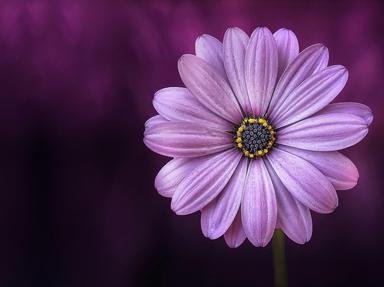Quiz Answer Key and Fun Facts
1. One of my all-time favorites, this perennial garden classic begins blooming early in spring and keeps going until the hot summer sun becomes too much for it. Its pink and white flowers have a distinctive shape that give it its common name. There is also a white variety, 'Alba,' of which I am fortunate enough to have a specimen.
2. This lovely little low-growing plant has variegated leaves and comes in white, pink, mauve, and yellow. With very little fuss, it will spread out and fill in bare spots with its attractive foliage. It often remains green until it is finally buried by snow in the winter.
3. Perhaps more commonly thought of as an herb, this low-growing perennial comes in a number of varieties. Its delicate blossoms in white, pink, purple and red, along with its refreshing fragrance, make it a joy to have around. The fact that it is quite hardy and easy to grow guarantees it a spot in my garden.
4. This family of plants includes low-growing, creeping varieties as well as some that are shrub-like in appearance and grow up to 30" or more in height. It is commonly known as stonecrop by some gardeners.
5. This flower generally blooms in mid-summer, though it may bloom earlier. It can be between 1-1/2 and 4 feet tall, with lace-like foliage and delicate tufts and spikes of blossoms. It doesn't do well in full sun, and much prefers partial or dappled shade.
6. You will often see the tall variety of this perennial growing in roadside ditches, but the creeping variety is a favorite for rock walls. A new addition to my own garden, I've planted some in my 4-tier terrace garden; I'm hoping to see it spread and fill in some of the bare spots there.
7. Rudbeckia is the formal name for this hardy perennial; its sunny yellow petals and dark-brown center give the flower its more common name.
8. No perennial garden would be quite complete without a resident feline, and no resident feline would be purr-fectly content without a few specimens of this perennial. Long prized for its medicinal properties, what is this well-known feline attraction?
9. Adorned with spikes of white or light-purple flowers in mid-to-late summer, this Wisconsin favorite is grown primarily for its foliage. Often variegated, and ranging from a deep blue-green to sunny yellow, what is this shade-loving perennial?
10. This perennial is great for those spots where nothing else will grow; it tolerates poor soil, grows in any light condition, and thrives on neglect. In fact, it may get out of hand and is considered a pest by some gardeners, but its light-green foliage with white margins make it an attractive choice in the right location.
Source: Author
peachy_1
This quiz was reviewed by FunTrivia editor
Bruyere before going online.
Any errors found in FunTrivia content are routinely corrected through our feedback system.
